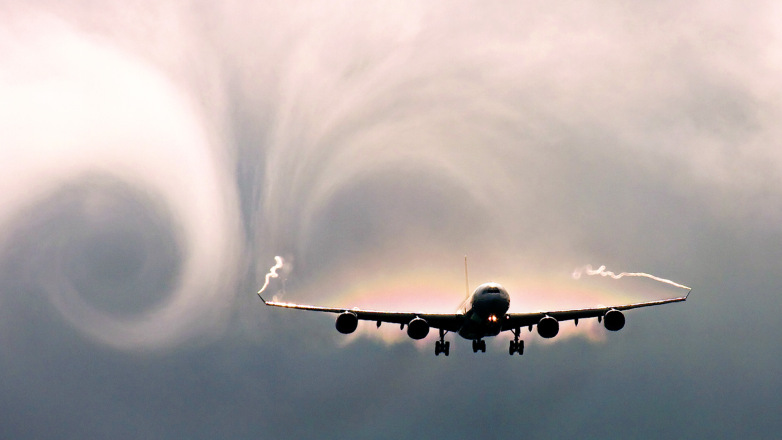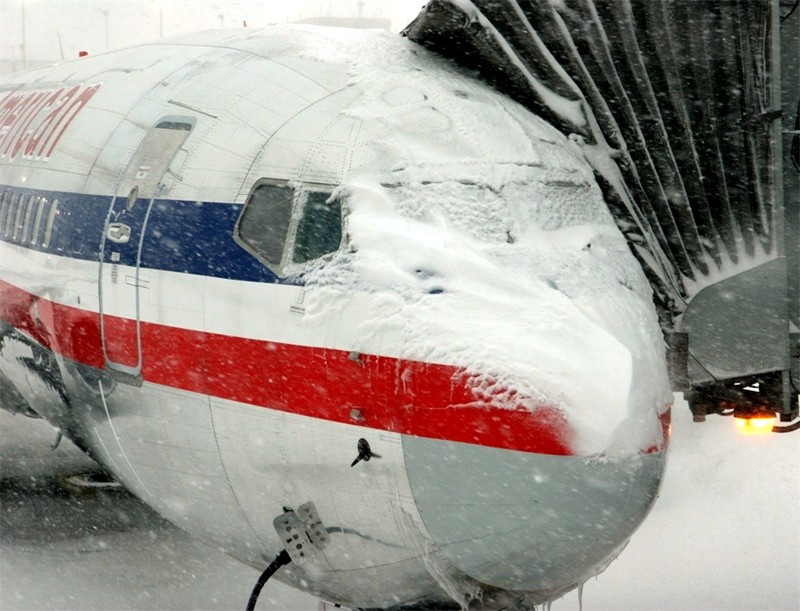Runway end markings significance for Pilots
So how do we “read” Runway Markings? Let’s start with the BIG WHITE number. Runways are numbered based on their compass directions. So 27 – 6 or 4 – 22. Take a look at the image below;
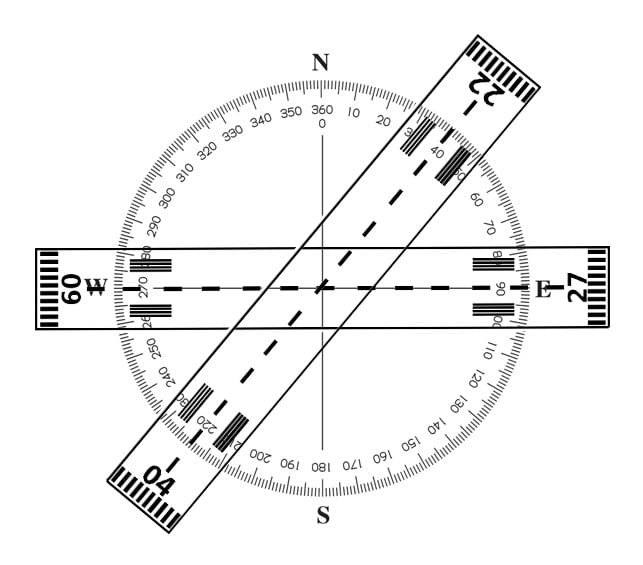
The runway number corresponds to the nearest 10 degrees on the compass, with the last digit dropped. For example, if a runway is oriented at 220 degrees on the compass (as in the picture), it would be assigned the number 22 – 04. This would be the pilot APPROACH DIRECTION. If there are multiple runways at an airport that are parallel or nearly parallel to each other, they are assigned letters in addition to numbers. “L” is used for the left runway, “C” for the center runway, and “R” for the right runway. O’Hare has 4L – 22R and 4R – 22L as well as a new 22C. Singapore has 02L – 20r and 02R – 20L.
Pilot Approaches & Decision Height
If there are two parallel runways oriented at 265 degrees, they would be numbered 26L and 26R, respectively. Runway numbering helps pilots quickly identify the correct runway and navigate safely during takeoff and landing procedures.
Decision Height
A pilot’s decision height is a critical point during an approach to a runway. Where the pilot must decide whether to continue the descent for landing or initiate a missed approach. This height is typically determined by the type of instrument approach being flown. And the minimum descent altitude specified in the approach procedure. The decision height is the point where the pilot must have the required visual reference to the runway in order to continue the approach. If the required visual reference is not obtained at this point, the pilot must execute a missed approach procedure. The decision height is an important safety feature that helps pilots avoid dangerous situations during the landing phase of flight.
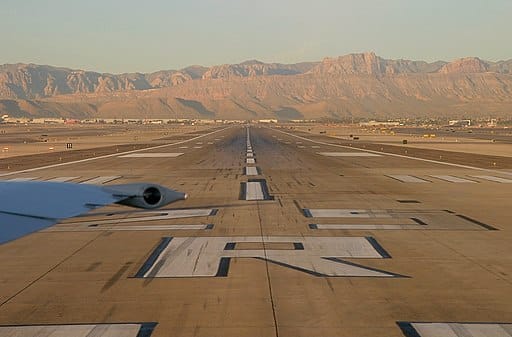
Centerline & Color Coding
White: The majority of runway markings are white, including centerline markings, runway edge markings, and holding position markings. White markings indicate areas where pilots should take normal caution when operating an aircraft.
Yellow: Yellow markings indicate caution areas, such as areas that require increased attention by pilots or where aircraft should not taxi or park. Examples of yellow markings include runway hold short markings. Which indicate where aircraft should stop when approaching an active runway. And taxiway centerline markings, which help guide pilots when taxiing to and from the runway.
Red: Red markings are used sparingly and indicate areas that are off-limits or potentially hazardous to aircraft. Examples of red markings include the “X” marking, which indicates that a runway is closed. Or temporarily unavailable for use, and the “H” marking, which indicates a helipad.
Runway Centerline Aiming Point
Aiming point markings are located on the runway and help pilots determine the point at which the aircraft should touch down during landing. Aiming point markings are typically located 1,000 feet from the threshold of the runway and consist of two rectangular markings with an open space in between. The open space between the rectangular markings is known as the “touchdown zone”. This indicates the area in which the aircraft’s wheels should make contact with the runway.

Distance
The distance of a runway is measured from the threshold to the opposite end of the runway. This distance is important for pilots to know, as it helps them determine the amount of runway they need for takeoff and landing. Runway distance is typically marked in white on the sides of the runway, and can also be found in airport charts and diagrams.

pilotinstitute
Are You Ready To Take Off?
Pass the FAA Private Pilot test with flying colors. Achieve your dreams of flying an airplane.
Surfaces
The surface of a runway is designed to be smooth and durable, capable of handling the weight and speed of aircraft during takeoff and landing procedures. Runway surfaces can be made of various materials, including asphalt, concrete, or even grass. The type of material used for a runway depends on factors such as the size and weight of the aircraft. The weather conditions in the area and the availability of resources for maintenance and repair.
Demarcation Position
A demarcation bar is a yellow marking located on the pavement that separates the runway from a taxiway or other area. The demarcation bar helps pilots differentiate between the runway and other areas. It indicates that the aircraft should stop before crossing the bar. Demarcation bars are typically located at the holding position for a runway. Which is the point where aircraft must stop before entering the runway.
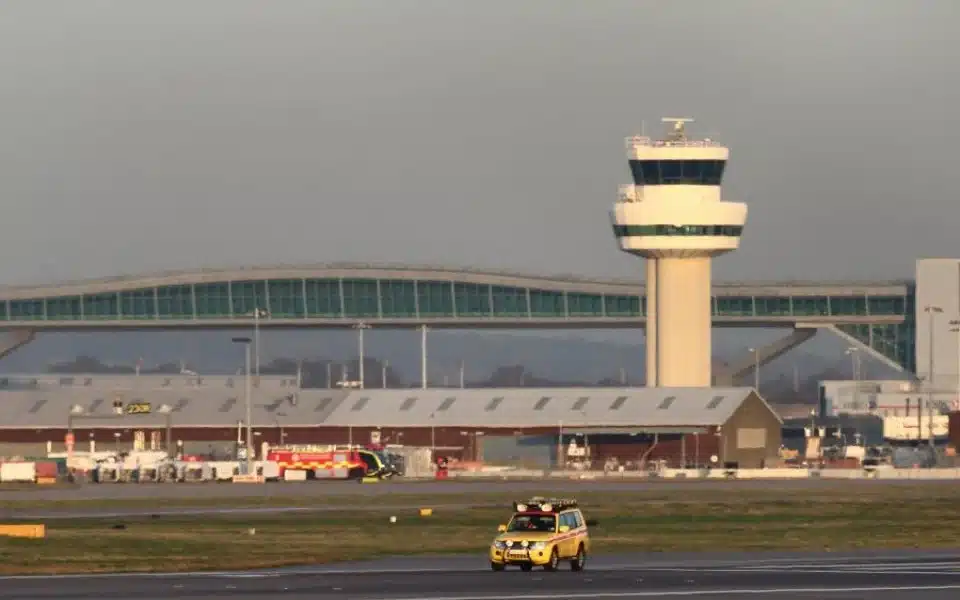
Challenges Maintaining Runways
The Federal Aviation Administration (FAA) requires that airport operators inspect and maintain runway markings. To ensure their visibility and effectiveness in guiding pilots. Maintenance includes regular inspections to check for fading, cracking, or other damage to the markings. If necessary, markings may be repainted or re-striped to maintain their visibility and legibility.
Additionally, the FAA requires that markings be re-painted or refreshed at regular intervals, typically every 6-12 months, depending on the amount of traffic the runway receives. As well as environmental factors that may impact the markings’ visibility. Airports must also maintain records of their runway marking maintenance, including the date of the last inspection, repairs made, and the date of the next scheduled maintenance.
The inspections are typically conducted using specialized vehicles, such as runway inspection vehicles, that are equipped with cameras and other equipment. To detect and record any problems or issues with the runway markings. During the inspections, the vehicle travels along the runway and inspects all areas of the runway, including markings, lights, and other features.
The inspections are typically conducted on a regular schedule. Any issues identified during the inspection are promptly addressed and repaired by airport maintenance personnel. The FAA provides guidelines for the frequency and type of inspections, based on factors such as the amount of traffic and weather conditions in the area.
Runway Incursion Case Studies
LATAM A320, Sao Paulo, 2020
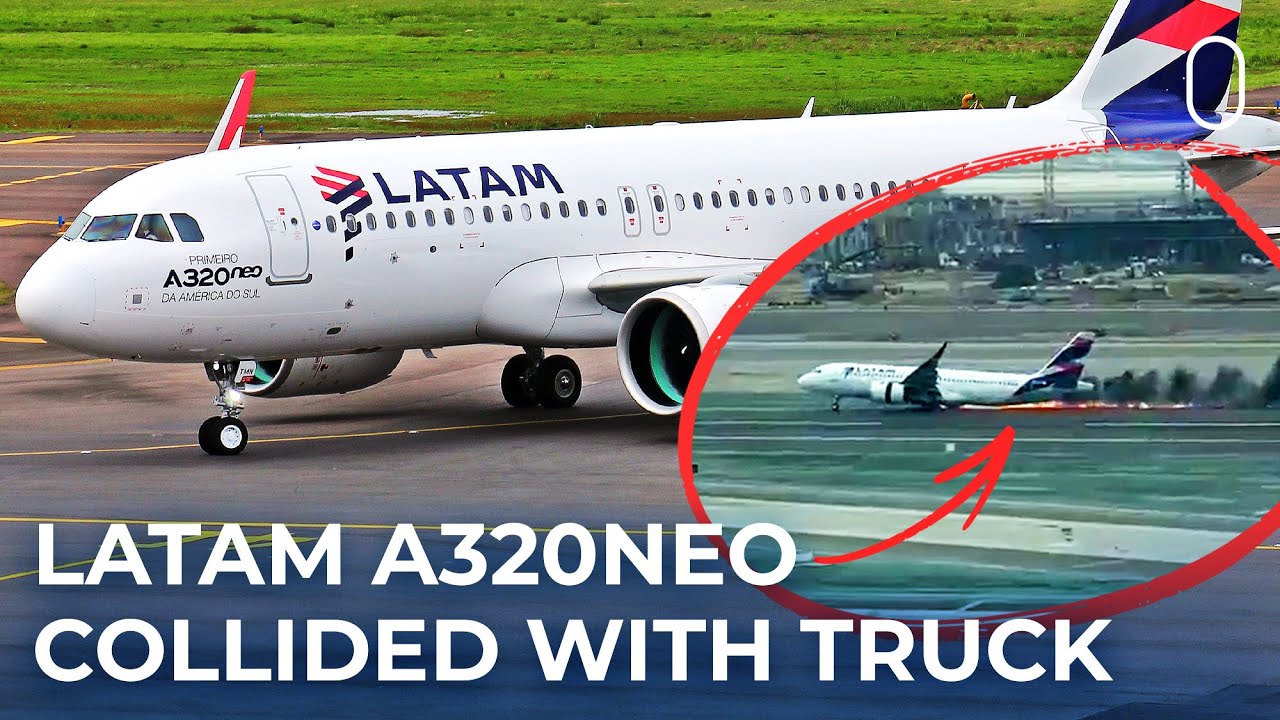
In December 2020, a Latam Airlines A320 was involved in an incident with a fire truck at Sao Paulo’s Guarulhos International Airport. The aircraft had just landed and was taxiing to the gate when the left engine ingested a bird, causing it to shut down. As a result, the pilots requested assistance from airport authorities, including a fire truck to meet them at the gate. However, during the taxi, the fire truck collided with the left wing of the aircraft, causing damage to both the wing and the fire truck. All passengers and crew disembarked safely but two fire crew members were killed. An investigation was launched to determine the cause of the incident and to prevent similar events from occurring in the future.
A320, UAE, Sharjah, 2018
On September 18, 2018, a training captain and a trainee second officer on board an Airbus A320 headed out of Sharjah were given the go-ahead for an intersecting takeoff on runway 30. Instead they changed onto the Runway 12 direction and started the takeoff with less than 1000 meters of runway remaining. When the Training Captain finally realized what had happened, he took over, set maximum thrust. The plane took off beyond the end of the runway, finishing its flight. The investigation concluded that the pilots’ lack of situational awareness was to blame for the incident. They noted that after giving the go-ahead for takeoff, the controller failed to keep an eye on the aircraft.
E170, 2019, Toronto
On January 28, 2019, a departing Embraer 170-200 narrowly avoided colliding with a portion of a convoy of four snow removal vehicles. These vehicles ignored instructions to enter a parallel taxiway and instead took a Rapid Exit Taxiway. They crossed the runway holding point, and then stopped just clear of the runway. This was after receiving repeated calls to do so. The airplane came to a stop just before the junction where the incursion had taken place after a high-speed takeoff attempt was rejected. The Investigation acknowledged the bad weather without pointing out any particular reason why the vehicle convoy didn’t move on as ordered.

TRAKRACER
Hone your aviation skills with these great flight simulator products from TrakRacer.
Get yourself in the sky today and feel what it’s like to be a pilot!
E190, 2010, Channel Islands
On June 1, 2010, an Airport RFFS bird scaring truck drove onto the Jersey active runway in LVP. This was without obtaining permission. They stayed there for around three minutes before ATC became aware. The investigation that followed revealed that the incursion had unintentionally taken place right after an ERJ 190 had touched down. And just as another aircraft started a go-around due to its inability to obtain the mandated visual reference. It was determined that the insufficiency of the existing procedures was the root cause of the vehicle driver’s failure to follow them.
B747-400, 2010, Luxembourg Airport
In heavy fog and during a Cat 3b ILS approach, a Cargolux Boeing 747-400F collided with an unoccupied van as it touched down on runway 24 at Luxembourg airport on January 21, 2010. It was later discovered that a repair worker and their vehicle had been given permission to enter the active runway earlier, but their presence had been missed. The Inquiry produced thorough safety recommendations to address issues with both the ATC processes and current ATC practices.
Frequently asked Questions about Markings for Runways
What is the purpose of markings?
Runway markings serve to guide pilots during takeoff and landing, helping them maintain proper alignment, speed, and distance from other aircraft and runway features. They also indicate areas where aircraft should not taxi or park.
What are Thousand Footers?
“Thousand-footers” are markings on runways that indicate the distance between the start of the runway and 1,000 feet. The markings typically appear every 1,000 feet along a runway . They provide pilots with an indication of how far they have traveled while taking off or landing. They also assist controllers in verifying aircraft position and providing proper separation between aircraft on approach or departure.
What are the three classifications of runways ?
The three classifications of runways are Visual Runway (VR), Non-Precision Approach (NPA), and Precision Approaches (PA). Visual runways have no instrument approach procedures and rely on the pilot’s visual judgement. NPA runways have basic approaches with a few navigational aids, such as localizers and VORs. PA runways have more complex approaches with multiple navigational aids, such as ILS or GPS-based systems.
Who many feet wide are international Airfield Runways?
150 feet wide. And 6,000 – 15,000 feet long.
Why are lines colored white and yellow?
White markings are used for runway centerlines, runway edges, and holding positions. Yellow markings indicate caution areas, such as areas that require increased attention by pilots or where aircraft should not taxi or park.
Who is responsible for Airport markings?
Airport authorities are responsible for maintaining runway markings, including regular inspections, cleaning, and repainting.
How often are markings repainted?
The frequency of repainting depends on several factors, including the volume of traffic, weather conditions, and the type of paint used. Typically, runway markings are repainted every one to two years.
What happens if markings are not maintained?
Failure to maintain runway markings can lead to safety hazards, including runway incursions, incorrect takeoff or landing procedures. No to mention collisions with other aircraft or ground vehicles.
What are some common challenges in maintaining markings?
Weather conditions, heavy use, and budget constraints are some common challenges faced by airport authorities in maintaining runway markings.
What are some of the regulations governing markings?
The Federal Aviation Administration (FAA) and the International Civil Aviation Organization (ICAO) both set standards and regulations for runway markings.
Can markings be modified to accommodate different aircraft?
Yes, airport authorities may modify runway markings to accommodate different types of aircraft or changes in runway configurations. These modifications must adhere to regulatory standards.
Can Designation Markings be used for emergency landings?
Yes, runway markings can be used to guide pilots during emergency landings or other unexpected situations, helping to ensure the safety of passengers and crew.

